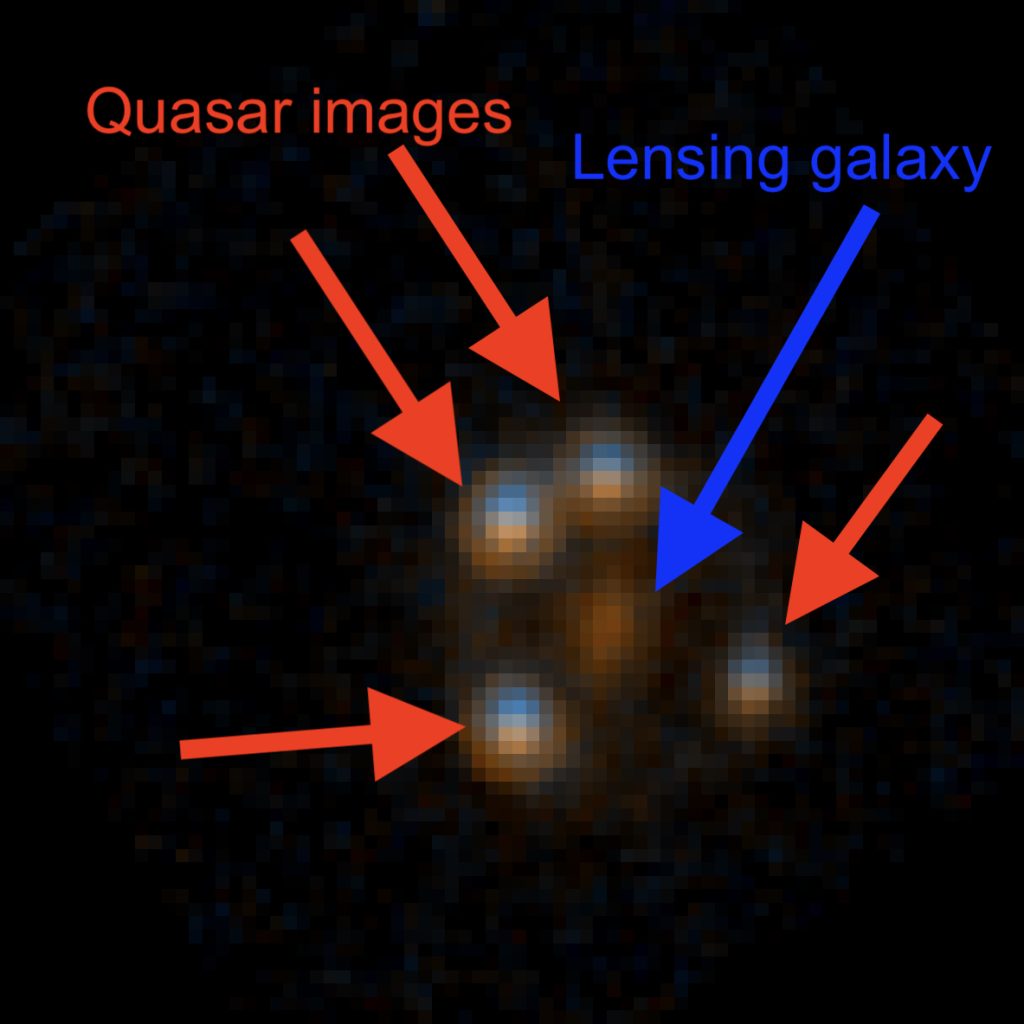Here are some example exciting undergraduate research projects from JHU Astronomy in Summer 2023:
Stefan Arseneau, a recipient of the Provost’s Undergraduate Research Award, continued working with Prod. Nadia Zakamska and submitted his paper on the equation of state of white dwarfs in wide stellar binary systems: https://ui.adsabs.harvard.edu/abs/2023arXiv231019866A/abstract. This work presents the first tentative evidence for the long-hypothesized, but very subtle temperature dependence of the white dwarf mass-radius relation.
Ronald Garcia worked with graduate student Yuzo Ishikawa and prof. Nadia Zakamska on the analysis of a quasar which is quadruply-lensed by a foreground galaxy.
Seti Norris (with Prof. Toby Marriage) developed knowledge and tools for studying Galactic synchrotron radiation in cosmic microwave background datasets. He is presenting his summer and continued fall research at the January 2024 AAS.
Daniel Drozdov (with Prof. Toby Marriage) programmed a web interface for the department’s 2.3-m teaching radio telescope for outreach and education.
Keyi Ding (Class of 2024), a recipient of the Provost’s Undergraduate Research Award, worked with Prof. Kevin Schlaufman to validate an approach to the large-scale inference of accurate, precise, homogeneous and physically self-consistent fundamental and photospheric stellar parameters for main sequence dwarfs. Keyi evaluated whether it is possible to use dwarf stars in open clusters with known ages and metallicities as well as dwarf stars with Kepler asteroseismology-informed masses and radii. Keyi has a AAS Journals article in preparation.
Le “Chris” Wang (Class of 2025), a recipient of the Provost’s Undergraduate Research Award, worked with Prof. Kevin Schlaufman. He used literature elemental abundances and MESA modelling to show that neither terrestrial nor giant planet formation is responsible for the apparent underabundance of refractory elements in the solar photosphere relative to nearby solar twin photospheres. Chris has a AAS Journals article in preparation.

